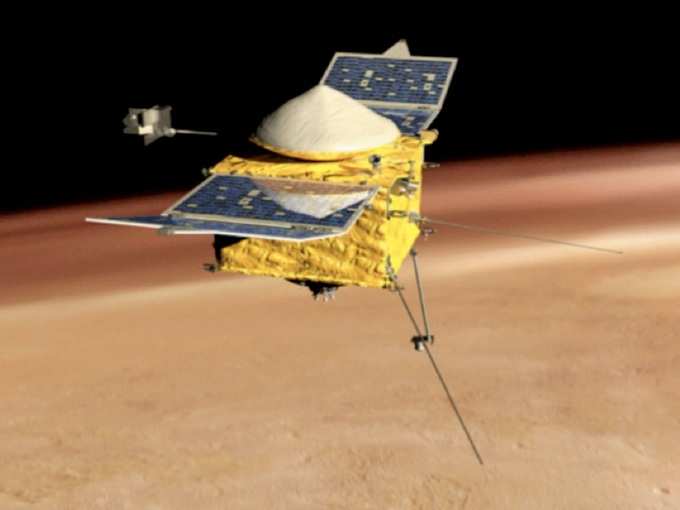
After hurtling through space for a period of 10-months,
This milestone marks the culmination of 11 years of concept and development for MAVEN, setting the stage for the mission's science phase, which will investigate Mars as no other mission has.
MAVEN has been launched in a bid to explore unknown details about the history and climate of the Red Planet. It is believed that these observations will help space scientists determine how much gas from Mars'
According to Bruce Jakosky, a principal investigator for MAVEN at the
David Mitchell, MAVEN's project manager at
MAVEN will, now, begin a six-week commissioning phase, which includes manoeuvring the spacecraft into its final orbit and testing its instruments and science mapping commands. Thereafter, the NASA’s spacecraft will begin its one-Earth-year primary mission to take measurements of the composition, structure and escape of gases in Mars' upper atmosphere and its interaction with the Sun and the solar wind.
(Image: NASA)